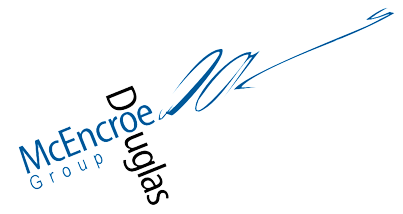 In my last article I looked at how the study of history can help executives’ ability to think in more complex ways, as described in Robert Keegan’s ground-breaking work on cognitive development. Building on Piaget’s work that described the stages of development that all children go through on their way to adulthood, Keegan argued that this development continues in adulthood. My article put forward the idea that the study of history can help executives develop the type of thinking that are typical in later stages of cognitive development described by Keegan and built on by people like William Torbert with his work vertical development and his description his “Action Logics” . I argued that this type of thinking is necessary when leading in a very complex world.
In my last article I looked at how the study of history can help executives’ ability to think in more complex ways, as described in Robert Keegan’s ground-breaking work on cognitive development. Building on Piaget’s work that described the stages of development that all children go through on their way to adulthood, Keegan argued that this development continues in adulthood. My article put forward the idea that the study of history can help executives develop the type of thinking that are typical in later stages of cognitive development described by Keegan and built on by people like William Torbert with his work vertical development and his description his “Action Logics” . I argued that this type of thinking is necessary when leading in a very complex world.
Today’s article will look at what we, as leadership development professionals, can do in formal leadership development programs to facilitate vertical development by encouraging participants to apply thinking that we could say was typical of the later stages of cognitive development. I will look at one particular methodology called “Action Learning” that we used over many years in leadership programs designed to support a major organisational transformation in a large multinational organisation.
How to develop the type of more complex thinking described in Torbert’s latter Action Logics
It is not difficult to see how a more complex world with interconnections not easily visible and going to require more complex thinking than you need in the day-to-day management in business. But what content and processes do you need to include in a leadership development program when what your client’s organisation needs is a major transformation?
I had the good fortune to work on a project during such a transformation. It was between 2003 – 2013 in Electrolux. This Swedish multinational is a true global organisation with over 57,000 employees operating in 150 countries. Back in 2003 Electrolux had what could be described as an engineering culture which was somewhat rigid and a little arrogant. It was certainly true that they made high quality appliances, but they believed that what the clients could get had to be determined by their manufacturing processes. In other words, clients would have to fit in with what our brilliant engineers could manufacture. If I can be a bit cheeky, I would also say that this thinking was underpinned by an unconscious attitude said, “and these customers were lucky to get them!”
But then a new CEO arrived on the scene, Hans Stråberg. Hans was one of the youngest CEOs ever to lead a Fortune 500 company. He actually reminded me of JFK, with a youth and charisma that he used to great effect. Hans led one of the deepest organisational transformations ever carried out in Europe. When I think back to Hans Stråberg and try to fit him into to Torbert’s seven Logic Action Logics, I would have to say he would fit perfectly into the Alchemist stage, the most mature of the Torbert’s seven action logics. These people embrace common humanity, challenge the dominant paradigm, are dedicated to their own continuous development, are comfortable living with conflicting paradoxes and don’t treat time solely as lineal. They consciously disturb systems and have an ability to continually renew and reinvent both themselves and their organisations. According to Rooke and Torbert’s research on American CEOs, only 1% of use thinking that would fit into this logic action.
In my opinion Stråberg certainly demonstrated this type of thinking, he recognised that new international competitors from countries such as Korea had a much more customer-oriented culture and a more flexible manufacturing set up. He understood that Electrolux had to become, not only more efficient in order to control costs but needed to be much more client oriented. He needed a culture that put the client at the centre and in which the engineering and manufacturing processes needed to be built around the client, not visa versa. This, for Electrolux in 2003 was a total revolution.
Leadership Development Program to support the organisational transformation
To support that transformation, I was selected along with one of the partners of the Swedish consultancy Riddarfjärden, Ulrika Rasmuson, to design and implement a leadership program. Our program was delivered over 6 days in two three-day modules with a break of six weeks between each module. It was also underpinned by individual coaching. This design allowed us to go quite deep and introduce more creative methodologies. Over a period of ten years, we worked with some 700 of Electrolux’s senior leaders.
A process called Action Learning as a way of producing Vertical Development
In order to support the transformation that Hans Stråberg was looking for, our leadership program design would need to bring real world organisational problems into the training room and develop the type of thinking that would be more typical of Bill Torbet’s three later action logics, the Individualist, the Strategists, and the Alchemists.
Up until then, with the engineering culture that I described above, the type of thinking that was used by the executives in Electrolux, would have fit in more with the thinking described in Torbert’s two preceding stages, called Expert, and Achiever. In the Expert action logic, logic is followed, expertise valued, and rational efficiency is sought. In the Achiever action logic, achieving strategic goals is sought, using the team to do so. In the Achiever action logic, executives juggle day-to-day management with commercial needs. This type of thinking in many situations was and continues to be appropriate. However, if you want your senior leaders to buy into and execute a major organisational transformation, it is not going to be enough.
So, what methodology could we use to push participants to apply a different kind of thinking?
A methodology that originated in Family Therapy
Ulrica and I chose a methodology that Riddarfjärden had developed called Action Learning. Built on Norwegian psychiatrist Tom Anderson’s work in family therapy using reflecting teams, my Swedish colleagues adapted Anderson’s approach and applied to the organisational environment. This powerful methodology brought real life organisational issues into the training room and used the potential of a group to work together to gain a deeper understanding of the problem. It required the group to think in new ways, holding ambiguity longer while they carried out a deeper and more open form of investigation. It thus gave them practice in applying the type of thinking typical of Torbet’s later stages.
A CEO who got his hands dirty
Stråberg assisted us over many years, by showing up in person for two hours on the first morning of all the programs, a remarkable effort by an incredibly busy CEO that I have never seen replicated by any other CEO anywhere in the world. Stråberg would set the scene presenting his understanding of where the sector was going and giving his vision of the type of transformation that the company required and describing the type of leadership that this would require. After his presentation he engaged in a sincere and open dialogue with all of the participants.
One of the problems with managers is that they have been trained to come up with solutions and to execute as fast as possible. However, when it comes to organisational issues, this approach often means coming up with a great solution for the wrong problem. Organisational issues are by their very nature complex, particularly in a company like Electrolux which operated in 150 different countries, and, when you are trying to transform the whole organisation and even trying to see your sector in a totally different way, you really need to develop the type of thinking which is appropriate for such complexity. To develop the type of thinking, you are going to have to come up with a methodology that really makes you go deeper into the true nature of the problem and hold the ambiguity longer, before you go to solution.
Eight steps in the process of Action Learning that helps the group go deeper
Here are the steps you need to follow in an Action Learning Session:
- You set up groups of 8 people made up of executives from different countries, from different parts of the business and from different product areas. This is similar to what Dave Snowden many years later described as “Entangled Trios” but with eight people in the group it was much richer in its diversity.
- Different members bring an issue to the team.
- Each member describes their issue and how it is impacting on the organisation.
- The team chooses an issue to work on.
- The team chooses the issue that seems the most important, urgent or that simply has the greatest potential impact on the organisation.
- The team questions the problem owner using a “Investigative Journalist”.
- In this part of the process the team appoints and coaches one member to play the role of an “investigative journalist”, helping him or her to prepare the questions. The “journalist” must try to come at the problem from as many different angles as possible asking questions that come from a wide variety of perspectives, asking about things that at first glance would seem completely separate from the problem at hand. In fact, the team must help the ”journalist” make sure that the questions are not too lineal in nature, that they explore widely and deeply, much like an investigative journalist would do. The “journalist” then interviews the problem owner.
- The team generates a series of at least 5 hypothesis on the true nature of the problem.
- After the journalist has completed their questioning, he or she returns to the group. At this point the problem owner has to sit outside of the circle, they are not allowed to intervene. They must listen only, no questions, no comments. It is like they were a ghost who is there, can listen, but cannot be seen or heard. This is an important part of the methodology design as it forces the problem owner to listen deeply.
- During this stage the team really tries to identify what is really going on, what type of problem are we really dealing with. The facilitator makes sure that they do not start to go on to problem solving but rather keep pushing out their analysis. The objective of having to come up with at least five different hypotheses creates the discipline to keep on pushing the boundaries, to keep on exploring until the complexity of the situation is clearly set out. It also forces the group to hold ambiguity longer, something many executives are not comfortable with. As the problem owner is forced to sit outside the circle and listen to the exploration, the person who at the beginning of the process knew more about the situation, begins to see a whole new set of elements that they had no idea of. They begin to see new connections and gain new insights.
- The problem owner chooses the hypothesis that best describes the problem.
- The problem owner is now allowed to communicate directly with the group again. At this stage he or she chooses the best hypothesis. He or she may even combine a couple of them and add a nuance. The fact that they have spent the last twenty minutes listening deeply gives them greater perspective which helps them see things more clearly.
- The problem owner sits outside of the group again and listens to the search for a solution.
- The problem owner again has to return to silent mode and listen without being allowed to comment as the group debates possible solutions. Again, the problem owner is forced to listen deeply to the discussion of the group.
- The problem owner re-joins the group and the team tries to choose
- At this point the group and the problem owner, work together to choose the best solution and set out the necessary actions to be taken. The facilitator makes sure that the actions are as concrete as possible.
In our leadership program we carried out three of these Action Learning sessions in each module. These sessions not only demanded that the participants use the type of thinking found in Torbert’s latter stages titled Individualists, Strategists, and at times even Alchemists but they also gave the participants a methodology that they could use again and again back at work forming groups of people that came from different parts of the organisation to investigate different situations.
These sessions helped participants find the root cause to complex organisational problems and innovative solutions that could positively impact the organisation. It also helped them see situations in a totally new light, often resulting in new understanding of the nature of the situation that they were dealing with. It also helped see connections between things that they had previously believed to be completely separate.
What was interesting is was to observe that during the Action Learning sessions, thinking that would be typical of many or Torbert’s Action Logics was used. In this way we can see that when you are leading in a complex world the type of thinking described in Torbert’s later Action Logics is going to be extremely useful. However, during a typical week you are also going to have to manage situations that require thinking that would be more typical of earlier stages or Action Logics. A mature leader will develop the type of think that he or she needs to apply when dealing with complexity, but they are also going to have to master the thinking which is more appropriate to dealing with every-day management situations. This flexibility is what will make a great leader.
The Action Learning methodology therefore helped us push the participants to use thinking that they will need when leading in a complex world. It did this in a way that traditional leadership development programs don’t.
As a final observation, if we look at the work of Jennifer Garvey Berger on leading in a complex world, the Action Learning methodology also helps participants become aware of, and then avoid Garvey Berger’s five mindtraps. These mindtraps hinder executives’ ability to lead in complexity:
- Being trapped by simple stories
- Being trapped by rightness
- Being trapped by agreement
- Being trapped by control
- Being trapped by our ego
We can easily see how the Action Learning process I’ve just described can help avoid all five of these mindtraps.
Making the connection between Action Learning and the theory of cognitive development, conscious
I believe that the connections that I have made between Keegan, Torbert and Snowden’s work on cognitive development and Garvey Berger’s work on dealing with complexity with the Action Learning methodology, can also be shared with participants in a program. The methodology is a useful tool, but I believe that showing how it connects with different ways of thinking, and how it avoids mindtraps can be very helpful to participants. At the end of the day, it is treating participants like adults, which is what they are.
History, Action Learning & Systems Thinking
Vertical development is necessary to help executives lead in a complex world. The study of history can help develop thinking which will assist us deal with this complexity. In leadership development programs, methodologies like Action Learning can also help. In my next article I will talk about how Barry Oshry’s work on understanding systems can be another useful way to develop the type of thinking we need to thrive in a complex world.





No Comments so far ↓
There are no comments yet...Kick things off by filling out the form below.